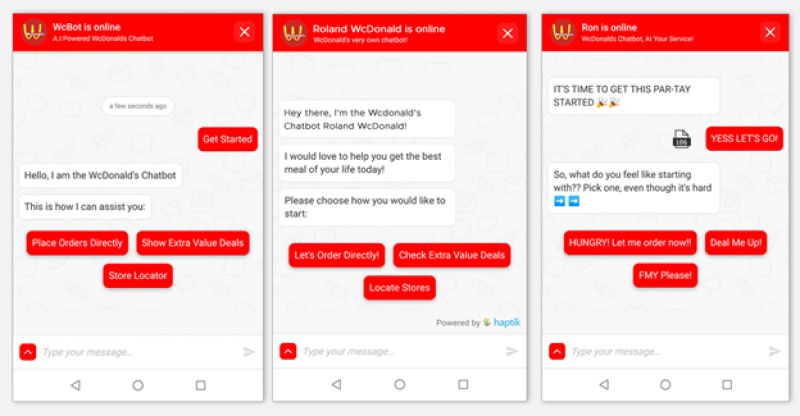67 per cent users like artificial assistants that have a 'friendly' personality
Research study by the conversational AI Company Haptik reveals.

Haptik has published a research study on “Virtual Assistant Personality Preference Among Urban English Speakers”. The study was conducted by Brinda Mehra, a Psychology student investigating the effects of inserting personality in chatbots and virtual assistants, and its influence on customer experiences primarily across three domains- likelihood of re-engagement, comfort levels and estimation of productivity and efficiency.
The research paper is available for download here.
As a part of the study, Haptik conducted experiments using bots with three distinct personality types:
- Transactional bot (impersonal and serious bot solely focused on efficiently completing tasks).
- Prosocial bot (attempts to mimic a ‘helping hand’, engaging in social niceties and easing users through task completion).
- Friendly bot (emotional and energetic bot that uses slang and pop culture references, simulating conversations between close friends).
The study revealed that urban English speakers overwhelmingly prefer virtual assistants that exhibit a friendly personality - rating them higher than more impersonal, purely ‘transactional’ assistants when it comes to factors such as comfort level and efficiency while completing tasks. They were also more likely to re-engage with ‘friendly’ assistants.

In the first experiment, participants, aged between 18-50, were asked to order food using each of the three bots. Although their ages varied drastically, their demographics were roughly the same. All participants had completed or were completing some level of tertiary education, had access to a smartphone or laptop (if not both) and were fluent English speakers living in metropolitan cities like Mumbai, Delhi and Hong Kong.
They were then asked to rate each of the three bots on a Likert scale, on three parameters - likelihood of re-engaging with the bot, their comfort level with the bot, and the efficiency with which the bot completed the task at hand.
The results of the experiment were as follows:
- 40 per cent of participants said that they felt extremely comfortable interacting with the friendly bot.
- Participants were nearly three times more likely to state that they would definitely want to interact with the friendly chatbot again, as compared to the transactional bot.
- The friendly bot was nearly four times more likely to get the highest rating for productivity and efficiency, as compared to the transactional bot.
- The average ranking of the friendly chatbot was around 22 per cent higher than that of the transactional bot.
The overwhelming preference for the friendly personality was further validated by the second experiment, with participants being asked to rate the three types of personalities based on viewing an interaction with a chat-based dictionary. The participants of the second experiment were aged 11 to 15, indicating that the preference for the friendly bots applies across age groups. The findings revealed that 67 per cent of participants expressed a preference for the friendly bot, over the prosocial and transactional types. Qualitative feedback collected from the participants indicated that the friendly bot made them “feel like they were talking to another human being”. The use of gifs, slang and emojis by this bot also appealed to them.

What this means for the future of user engagement?
The one-of-its-kind study by Haptik has revealed interesting insights that can have far-reaching effects on how we understand man-machine engagement today. Interestingly, Haptik has been doing significant work in the field of enhancing user experience in chatbot engagement. Its research team conducts extensive, granular level analysis of each element involved in chatbot conversations, such as the font, sound design, tonality of conversation, length of sentences, and even the emoticons used.
